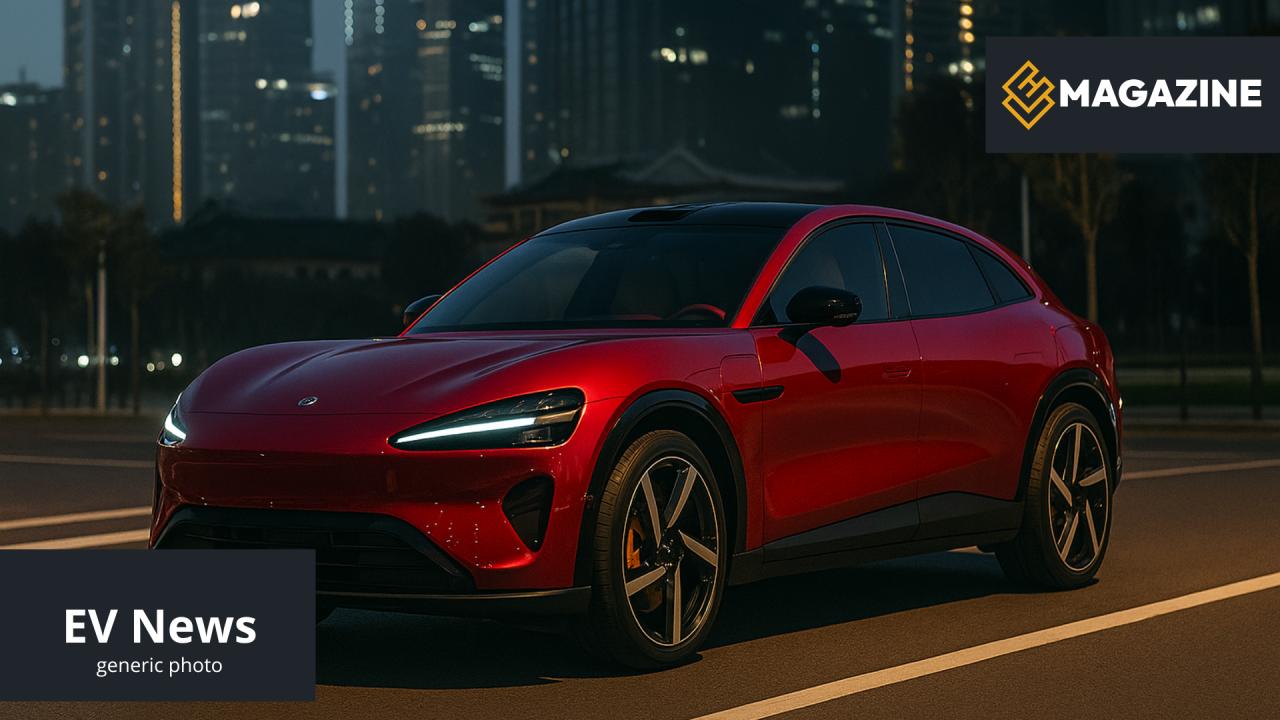835km
3.23s
€35,000
15min
Silicon Carbide Revolution: The 800V Architecture That Changes Everything
The Xiaomi YU7 represents a technological watershed moment in electric mobility, implementing onsemi's EliteSiC M3e technology in its advanced 800V drive platform. This isn't just incremental progress—it's a fundamental reimagining of what's possible in electric vehicle efficiency and performance.
The EliteSiC M3e platform features the industry's lowest on-resistance, enabling smaller, lighter, and more robust traction systems. This translates directly into real-world benefits: better performance density, reduced system costs, and crucially for European drivers—extended range without compromising the driving dynamics expected from premium vehicles.
The YU7 Lineup: Three Variants to Challenge Every Competitor
Innovation Focus: Maximum efficiency with single-motor simplicity, delivering the longest range in the lineup through optimized rear-wheel drive configuration.
Innovation Focus: Dual-motor all-wheel drive with intelligent torque vectoring, balancing performance with impressive efficiency.
Innovation Focus: Hypercar-level acceleration in an SUV body, featuring 866 Nm of torque and a top speed of 253 km/h.
Design Philosophy: When Tech Giants Build Cars
The YU7's design draws clear inspiration from the Ferrari Purosangue, but this isn't mere imitation—it's democratization of luxury. With dimensions of 4,999mm length, 1,996mm width, and a 3,000mm wheelbase, the YU7 surpasses the Tesla Model Y in every dimension while achieving an exceptional 0.245 Cd drag coefficient through 40 aerodynamic optimizations.
The vehicle features what Xiaomi claims is the world's largest aluminum clamshell hood on a mass-produced vehicle at 3.11 m², complemented by frameless mirrors, flush door handles with UWB smartphone unlocking, and nine distinctive color options including the exclusive Emerald Green Metallic inspired by Colombian emeralds.
HyperVision Interior: The Future of Automotive Cockpits
1.1-meter-wide HyperVision dashboard featuring three Mini LED screens with 108 PPD retina-level resolution, integrating driving data, media, and blind-spot imaging.
Nappa leather seats with 123° full recline, 10-point massage functions, and 12-layer construction for ultimate comfort on long journeys.
6.68-inch touch control screen for rear passengers, managing climate, entertainment, and navigation independently.
Snapdragon 8 Gen 3 processor enables 1.35-second boot times and 15-minute OTA updates, setting new benchmarks for automotive computing.
Autonomous Driving: NVIDIA Thor Meets Xiaomi HAD
The YU7 deploys NVIDIA's Thor chip with 700 TOPS of processing power, supporting Xiaomi's full-stack HAD (Hyper Auto Drive) system. Combined with 4D millimeter-wave radar and high-resolution cameras, the system delivers supervised autonomous driving with planned Level 3 capability via software updates in 2026.
Market Disruption: The Numbers That Shake the Industry
The YU7's market impact has been nothing short of seismic. Within three minutes of launch, Xiaomi secured over 200,000 firm orders, reaching 240,000 in 18 hours and 289,000 in the first hour of availability. These aren't just expressions of interest—these are locked-in orders with deposits.
We recommend investors have a look at the pictures and specs of the Xiaomi YU7, which looks like a Ferrari or Aston Martin SUV at the price of a Toyota Camry. Then ask yourself if Tesla would be better off introducing more steering-wheel-having EVs.
European Strategy: Navigating Tariffs and Expectations
Xiaomi has confirmed its European market entry for 2027, with president Lu Weibing stating that "the business model we have developed in China can also apply in overseas markets." The company has already established an R&D center in Munich, hiring former BMW designers including Kai Langer and Rudolf Dittrich.
The European launch faces challenges including potential tariffs up to 48% on Chinese-made EVs. However, Xiaomi's strategy of offering superior technology at mainstream prices could prove compelling enough to overcome these barriers. The company has already registered its first experimental vehicle in Germany, displaying an SU7 Ultra with Munich plates.
Safety Innovation: Beyond Traditional Standards
2200 MPa ultra-high-strength steel integrated roll cage with 20-in-1 aluminum die-cast front frame, exceeding European safety standards.
Reinforced battery shell with specialized coating, tested through over 50 passive safety scenarios including extreme impact tests.
One of the most complete sensor suites in its class, supporting current Level 2+ autonomy with hardware ready for Level 3.
6.49 million kilometers of real-world testing across 653 test vehicles, including 24-hour endurance runs at speeds exceeding 210 km/h.
The Bottom Line: Why Europe Should Pay Attention
August 2025: F2 factory construction completion in Beijing
2026: European homologation and testing phase begins
Early 2027: First deliveries expected in Germany and key European markets
Mid-2027: Full European rollout across major cities

